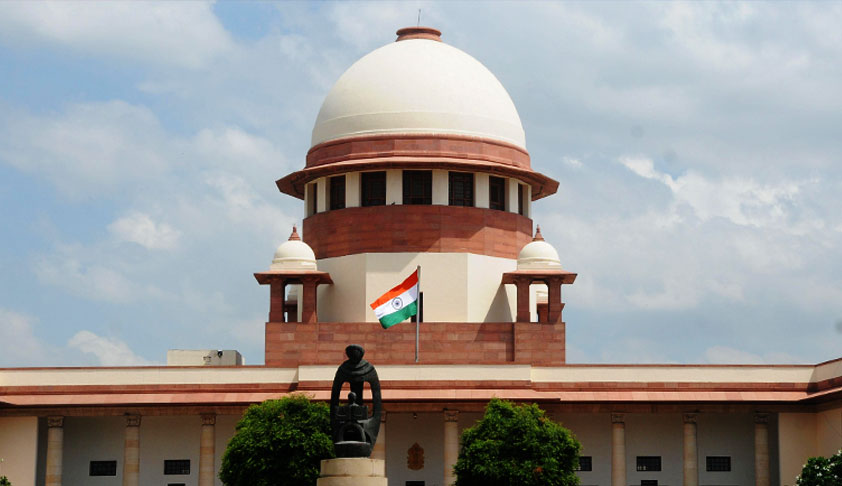'Master Of The Roster Or Upside Down'
Namit Saxena
13 Jan 2018 11:05 PM IST
A constitutional court is headed by the senior-most judge termed as the Chief Justice. In high courts, the Chief Justice is the Chief Justice of the High Court and not Chief Justice of that particular State. In the case of the Supreme Court, the Chief Justice, diametrically opposite to the position in the high courts, is the Chief Justice of India and not the Chief Justice of the Supreme...
A constitutional court is headed by the senior-most judge termed as the Chief Justice. In high courts, the Chief Justice is the Chief Justice of the High Court and not Chief Justice of that particular State. In the case of the Supreme Court, the Chief Justice, diametrically opposite to the position in the high courts, is the Chief Justice of India and not the Chief Justice of the Supreme Court. It is precisely why the responsibilities on the shoulders of the Chief Justice of India are very high and much more important for the entire nation. The Chief Justice, to address and carry on the responsibilities, therefore, enjoys sufficient administrative powers.
One must remember, having a power, exercise of such power and conditions of exercise of such power are three different things. It is here where we have a problem right now. It is undoubted that the Chief Justice is the master of the roster. Composition of benches, assignment of cases, and shifting of cases from one bench to the other is the power of the Chief Justice. The Chief Justice exercises these powers collectively under the Supreme Court Rules, the Constitution and judicial precedents. These powers including the power to allocate cases are not unguided and are bound by the rule of law and conventions. It is unfortunately in the exercise of this power of assignment of matters, factually, there is something not correct currently. Senior advocate and distinguished member of the Supreme Court bar Dushyant Dave highlighted this in two articles. One with LiveLaw and the other with The Indian Express. Four senior-most judges met in person with the Chief Justice to resolve this issue. But to no avail. It is then when left with no other option, the four judges decided to trace it to the country and leave it to their wisdom.
To understand the whole issue, a lot of dots need to be connected. Avoiding and skipping that part in institutional interest, I must share that the real cause, the real problem and the real attack on the institution today is direct political interference at the highest level which is violating constitutional serendipity. The ‘we’ weapon of the judiciary, which has been kept sacrosanct as a convention for so many reasons, cannot be used anymore because of this. The judges have held ground and a lot of open secrets have conventionally been kept blocked from the countrymen to maintain the trust they have in the institution. I must appreciate that even during the press conference, the judges maintained calm and only shared their helplessness after trying their level best to cure the opaque defective system. But extreme times call for extreme measures. Few things have blown out of proportion. If not judges themselves, who will step forward and share with the fellow countrymen that something absurd is happening and if not checked democracy will not survive. The selective posting of matters is only a facet of what is happening. The public trust in the institution and the pride of it being independent seems to be misplaced in the light of current developments.
A section of the media influenced by a particular ideology is attempting to give this issue a form of a divorced wife spilling bedroom secrets. One must not only ‘look at’ at what is happening but also ‘look through’ it. The judicial veil needs to be lifted and pierced. It is hard to tell the truth, harder still to accept it. The people of this country have a right to be informed and subsequently decide. In times like these, to be silent is to do a sin. I appeal to the bar to rise to this occasion and support the larger institutional interest. One may be the master of the roster, but the roster is not of the master. Perhaps this will convey and consequently repair all that remains untold and undeclared. Hoping for the best, fingers crossed!
 Namit Saxena is a Lawyer practicing in the Supreme Court of India. The author can be reached at namitsaxenaoffice@gmail.com .
Namit Saxena is a Lawyer practicing in the Supreme Court of India. The author can be reached at namitsaxenaoffice@gmail.com .
[The opinions expressed in this article are the personal opinions of the author. The facts and opinions appearing in the article do not reflect the views of LiveLaw and LiveLaw does not assume any responsibility or liability for the same]


